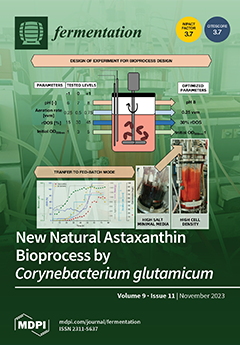Alkaline mineral complex buffer can improve rumen fermentation and affect the rumen microbiota of dairy cows. Here, we studied the effects of alkaline mineral complex buffer on serum immunity indexes, rumen fermentation and the microbiota of newborn calves. We also investigated changes in the rumen epithelial transcriptome expression profile. Compared with the control group, at 15 d, the serum contents of TP and GLB in the treatment group increased significantly (
p < 0.05). At 30 d, the serum contents of GLB in the treatment group increased significantly (
p < 0.05). At 45 d, the serum contents of IgG in the treatment group increased significantly (
p < 0.05). At 60 d, the serum contents of TP and IgG in the treatment group increased significantly (
p < 0.05). Rumen pH in the treatment groups was significantly increased at different days of age (
p < 0.05). The microbial community composition in the rumen was determined using bacterial and archaeal 16S ribosomal RNA (rRNA) gene amplicon-sequencing. Analysis of bacterial composition in the rumen showed that there was no significant difference in bacterial diversity (
p > 0.05). At the phylum level, Firmicutes were significantly decreased and Bacteroidetes were significantly increased in the treatment group at 30 d (
p < 0.05). At the genus level,
Prevotella_1,
Olsenella,
Christensenellaceae_R-7_group were significantly increased, and
Lachnospiraceae_NK3A20_group,
Ruminococcaceae_UCG-014 and
Ruminococcus_2 were significantly decreased in the treatment group at 30 d (
p < 0.05).
Christensenellaceae_R-7_group was significantly increased in the treatment group (
p < 0.05) at 45 d.
Prevotella_9 was significantly decreased, and
Prevotellaceae_UCG_001,
Christensenellaceae_R-7_group were significantly increased in the treatment group at 60 d (
p < 0.05). RNA sequence analysis of the rumen epithelium showed that 232 differentially expressed genes were screened, of which 158 were upregulated and 74 were downregulated. The main enrichment pathway was related to immune regulation. In conclusion, alkaline mineral complex buffer can enhance the body’s immune response, regulate rumen fermentation by regulating the abundance of rumen microbiota and upregulate immune-related genes in rumen tissues to promote immune regulation. The results of this study provide a reference for the early nutritional regulation of newborn calves with an alkaline mineral complex buffer.
Full article





